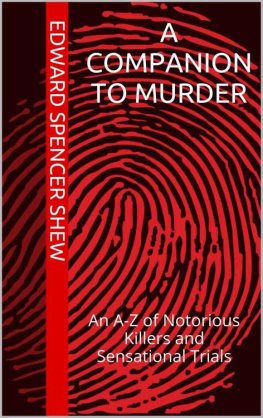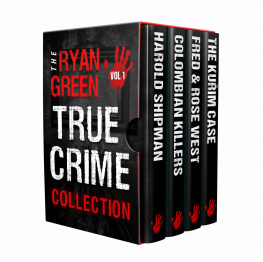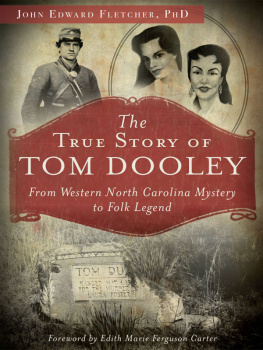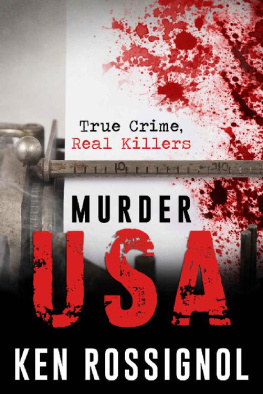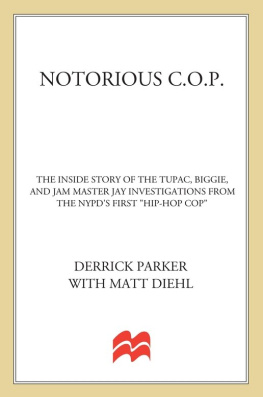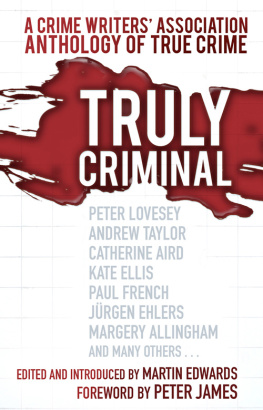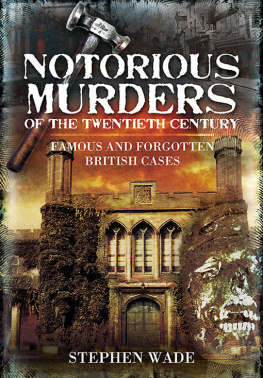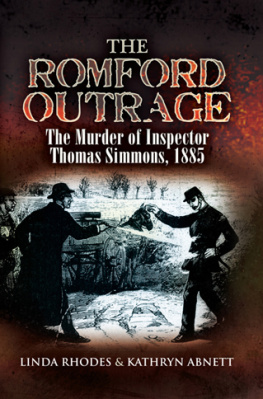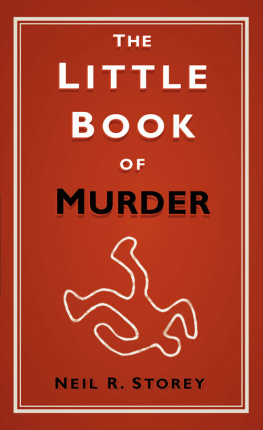Contents
List of Illustrations
Foreword by Theodore Dalrymple
EDWARD SPENCER SHEW was born in Bristol in 1908 and died,aged 68, in Weston-Super-Mare, in 1977.
For many years he was a parliamentary lobby correspondent,but in the 1930 he worked as a news agency reporter, was frequently at the OldBailey, and reported on many of the ghastly murder trials featured in this book,including those of Elvira Barney, Ethel Major, Sidney Fox, Buck Ruxton, AlfredArthur Rouse and Sarah Hearne.
He published a novel, Miss Proutie, in 1952, and in1971 a pulp novel adaptation of a Hammer horror film, The Hands of theRipper, itself based on a short story by him. His wife Betty wrote booksabout royalty, and in 1996 letters that the Queen had written to her in 1947about her future husband, Prince Philip, were sold at auction.
Between his excursions into fiction, Edward Spencer Shewwrote two classic books, A Companion to Murder, published in 1960, and ASecond Companion to Murder, published in 1961. The first of these books wonan Edgar Award in 1963, one of the prestigious prizes awarded annually by theMystery Writers of America. But I think it fair to say that, brilliant andentertaining as these books are, they are nowadays known only to a small groupof aficionados.
I have never met anyone, however, who has read them who didnot become a devotee and an admirer of their author.
They do not pretend to be encyclopaedias of murders committedin Britain between 1900 and 1950, but rather compendia of the most interestingcases. The period chosen includes the apogee and then decline of what might becalled the golden age of British murder, that is to say of murder committed notjust in that sordid underworld that has always existed, and in which murder isonly to be expected, but of murder committed in a respectable and religiousmiddle or lower-middle class environment, where murders were not just a matterof two blockheads to kill and be killed, as De Quincey put in his essay OnMurder Considered as One of the Fine Arts.
Spencer Shew wrote at the end of what might be called thecosy era of crime in Britain, during which violence had fallen to the lowestlevels in history and therefore might be read about in comfort as somethingexotic and mildly titillating.
George Orwell, in The Decline of the English Murder,delineated what were the criteria for the perfect murder of the period:"The murderer should be a little man of the professional class living anintensely respectable life somewhere in the suburbs, and preferably in asemi-detached house, which will allow the neighbours to hear suspicious soundsthrough the wall. He should be either chairman of the local Conservative Partybranch, or a leading Non-conformist and strong Temperance advocate. He shouldgo astray through cherishing a guilty passion In the last analysis he shouldcommit murder because this seems to him less disgraceful, and less damaging tohis career, than being detected in adultery."
Such murders can be committed only where respectabilityretains its hold as a desideratum on the great mass of the population, andSpencer Shew chronicled, through its crime, the end of the era ofrespectability. His book is therefore valuable as social history; but if he wasfortunate in his period, his period was fortunate in him.
His vignettes of the murders, murderers, victims, trials,defence and prosecution barristers, and judges (who were all household names intheir day, as are stars of television programmes now), are masterpieces ofcompression, conveying atmosphere, character and event in few butbrilliantly-chosen words.
Here, for example, are the first words of his description ofthe infamous Brides in the Bath murderer, George Joseph Smith, who pretendedto marry three women in succession and then drowned them in the bath a few daysafterwards (claiming that they had suffered from epileptic fits) to collecttheir insurance money: "George Joseph Smith, murderer, bigamist, swindler,performer on the harmonium and one of the most consummate scoundrels who everlived..."
The musical attribute comes to the reader as an electricshock, and also conveys to perfection the Non-conformist petty bourgeois milieuin which Smith operated. The tune he played after drowning his so-called wives,incidentally, was Nearer my God to thee.
Spencer Shew mastered the art one of the hardest for awriter to master of paring everything down to its essentials, not a word toomany, not a word out of place. If you want to know about the social history of Britain, if murder interests you as it interests most of mankind, if you want to learn howto write spare, accurate English prose full of humour, without flippancy andrawness, without vulgarity, read Edward Spencer Shew!
Theodore Dalrymple, 2014
Theodore Dalrymple is a retired British prison doctor andpsychiatrist and respected author of many books including:
SecondOpinion
NotWith A Bang But A Whimper
IfSymptoms Persist
LifeAt The Bottom
OurCulture, What's Left Of It
AnythingGoes
FoolOr Physician
MonroviaMon Amour
TheWilder Shores Of Marx
ZanzibarTo Timbuktu
TheExamined Life
ThePoliceman And The Brothel
Introduction by Edward Spencer Shew
OF THE CASES presented here, some have been chosen because thepeople involved in them are strange and remarkable people, passionate,revengeful, avaricious, stupid, ambitious, resourceful, pitiable, tragic, evencomic, beyond the ordinary. Others have been chosen because the interplay ofmotive behind the crime has some special interest; others for the sake of somebrilliant stroke of detection. Other cases because they illustrate some tenetof law as it applies to the crime of murder; others, again, because theydisplay the forensic skill of a great advocate, the lan of a MarshallHall, the precise and persuasive logic of a Norman Birkett,
In these pages will be found choice murders by poison, by thepistol, the rifle and the revolver, by suffocation, by strangulation and bydrowning-a collection of cases recorded in Great Britain during the first halfof the century, each of which has some claim to be distinguished from theunrewarding mass. Also included are biographies of judges and counselassociated with those cases together with some discussion of various principlesbearing upon the law of murder, as amended by the Homicide Act of 1957
I watched from close hand the brilliance and admired theskill of Norman Birkett, Patrick Hastings and other famous advocates whosuccess-and failures-I have, in this book recorded from a distance.
I sat under the Sphinx-like gaze of Mr Justice Avory, thetapping pencil of Mr Justice Swift, the sudden grimace of Mr Justice Rowlatt. Ireported the dispassionate Mr Justice Humphreys, the anything but dispassionateLord Hewart, the social criticisms of Mr Justice McCardie-all these and manymore appear with greater or less prominence in this book.
Much of the writing of the book was done in the Press Galleryof the House of Commons during the duller patches of the duller debates-whenone's thoughts are inclined to be bloody!
A Note On The Text
This e-book edition of A Companion to Murder has beenupdated (some of the criminals featured have since had their convictionsquashed or new evidence has come to light with the advancement of forensictechniques and the introduction of genetic testing).
The e-book has also been enhanced by the addition ofphotographs and illustrations of some of the murderers, victims and judges whoappear in its pages. The original book had no illustrations or photographs.

